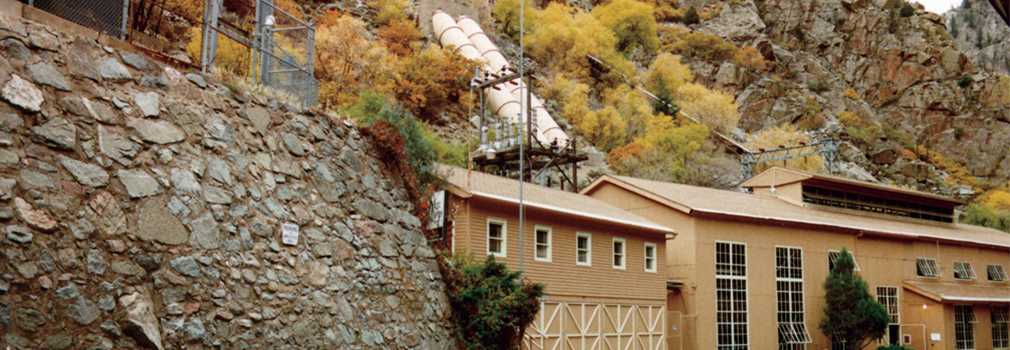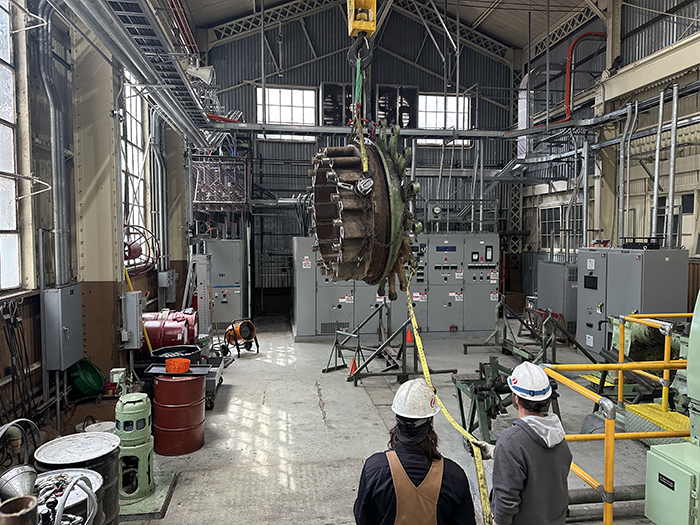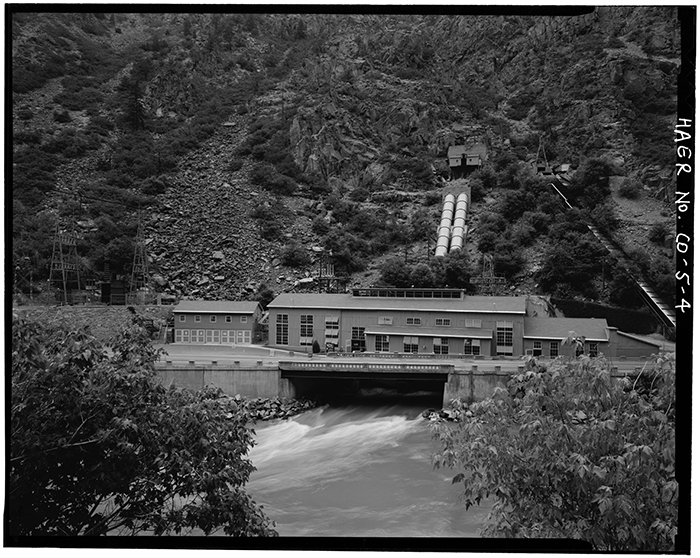Operational Excellence
November 28, 2023
From Wisconsin to Colorado, skill-sharing and teamwork keep hydro plant running
Xcel Energy teams work across states to overhaul Shoshone Hydroelectric Generating Plant

The original renewable energy source, waterpower is an important part of Xcel Energy’s clean energy future. When repairs were needed recently at one of our 26 hydro plants, Xcel Energy’s hydro teams brought their experience and teamwork to bear, working across states to efficiently complete an overhaul at the Shoshone Hydroelectric Generating Plant east of Glenwood Springs, Colorado.
A remarkable engineering accomplishment, the Shoshone plant was built in the Glenwood Canyon to harness Colorado River water and relies on the river flow rather than water stored in a reservoir. Its two nine-foot-tall turbines were manufactured and installed in 1906. With the oldest water rights on the river, 1,250 cubic feet per second flows onto the turbines and back out to produce 15 megawatts of electricity and sustain an important part of the local economy: rafting, kayaking and fishing.
In early 2023, when one of the turbines seemed worse for wear, the Hydro West team looked to the east for help. “This type of repair work was a new experience for many of the operators at Shoshone,” said Art Steimer, manager, Colorado Hydro Plant Operations. “We didn’t want to outsource this project to contractors, so we reached out to see what we could learn from the Wisconsin team.”

Leveraging internal expertise
With 22 years of experience on Wisconsin’s 19 hydro plants in his back pocket, Senior Mechanic Foreman Dan Wiensch made his way to the Shoshone Plant to help with disassembly of the Unit A turbine.
“We have 67 generating turbines, including several on century-old hydro plants in Wisconsin and Minnesota. So, Hydro East and mechanics like Dan have a lot of hands-on experience, which is unique to the industry,” said Ben Mosack, manager, Hydro Operations. “A low percentage of hydro owners have the experience or machine shop capabilities to perform these repairs in house. Often a contractor is hired to disassemble, make repairs, fabricate new parts or purchase new parts and then reassemble. We want to keep repairs in house as much as possible.”
The combined effort by Hydro West and Hydro East to disassemble the worn turbine was just the beginning. A materials engineering group in Colorado helped make repair assessments and recommendations. The Colorado Substation Construction group provided a crane and the expertise to get the equipment out of the plant. And a freight group out of Minnesota’s Maple Grove Service Center added a Shoshone stop to a planned trip west to load and transport the equipment to the Wisconsin Hydro Maintenance Building (HMB).
“We are doing all this work internally, and utilizing the expertise from the HMB team gave us the confidence that the overhaul would be done right,” Steimer said.
Finding efficiencies for the long haul
In many hydropower plants, major equipment such as turbines, generators, shut-off valves and pressure regulating valves are customized designs for the specific plant. The vast array of unique equipment makes it difficult to maintain a stock of spare parts. Yet, replacement with new equipment is a significant challenge and investment, as is outsourcing repairs to contractors.
After the Shoshone Unit A turbine was disassembled, the extent of wear and degradation was assessed, and a repair plan was developed. Corroded, cracked and cavitated parts were repaired, increasing the efficiency of the plant. Other parts were inspected for structural integrity and life expectancy, and some will need to be replaced as part of the capital project in 2025.
“In almost all cases, we can reduce costs by performing repairs or refurbishment in house and have better results,” Mosack said.
According to Steimer, the benefits extend even further. “By collaborating with Hydro East, we were able to identify areas of improvement in the plant, components that are potentially at end of life and tooling that is obsolete. Replacing and upgrading these will allow us to operate more safely, efficiently and reduce unplanned outages.”
Completion of the overhaul is anticipated in December 2023, ensuring Unit A on this run-of-river hydro is ready for spring runoff.

Developing employees and building strong teams
A cookie-cutter solution is rarely, if ever, a fix when it comes to working on old hydro plant equipment. It is always a learning process, but sharing experience is a good place to start.
The Shoshone hydro operators are relatively new and had not been exposed to this type of overhaul. Armed with technical advice from the Hydro East senior mechanic, they were able to learn by doing and develop experience.
“Hydro East employees showed up each day willing to teach and share knowledge,” Steimer said. “It’s obvious they are passionate about the work, and their excitement was contagious.”
The collaboration between the two teams had a two-way positive effect.
“We are always learning,” said Mosak of the Hydro East mechanics and machinists. “Over the years, the team has had to adapt to many different situations to repair 100-year-old equipment. In most cases, we seek out training to develop our journeyman and apprentice mechanics and machinists. It felt good to be able to share real-field experiences with a department that cares for their equipment like we do,” he said, adding, “in our industry, we want to maintain our hydros to run another 100 years.”


